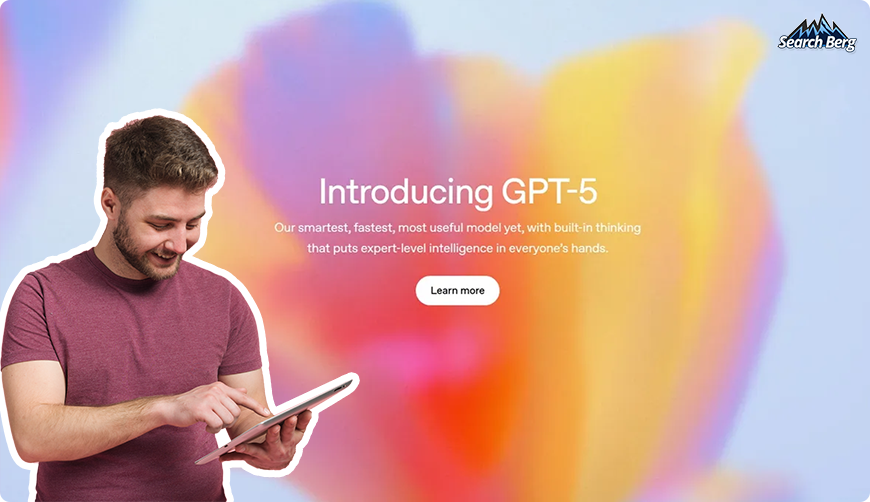ChatGPT-5 is Here, But Can It Really Replace Skilled Human Writers?
OpenAI’s latest AI upgrade is impressive, but small businesses should think twice before letting it run their content strategy

Highlights
- GPT-5 delivers faster answers, better tone control, and fewer factual errors than previous versions
- New “thinking” mode handles complex queries with more accuracy and nuance
- Built-in personas allow for style customization, but still can’t replicate the true brand voice
- Human writers still beat AI when it comes to context, creativity, and emotional connection
OpenAI has just dropped ChatGPT-5, calling it its most advanced AI model yet. The company promises faster responses, stronger accuracy, improved tone control, and smarter handling of complex tasks. It even comes with built-in personas like “Cynic” and “Listener” to help shape the writing style.
For small businesses already juggling marketing, sales, and customer service, the idea of AI that can draft a blog post or social caption in seconds sounds tempting. But just because it can write doesn’t mean it should replace your human writers.
What OpenAI Says ChatGPT-5 Can Do
According to OpenAI, GPT-5 is a leap forward in three key areas: writing, coding, and health. On the writing side, it claims to better handle structure, rhythm, and tone, producing content that feels more natural and nuanced. It’s also supposedly 45% less likely to produce factual errors than GPT-4o, and up to 80% more accurate in its “thinking” mode. This means fewer wild guesses, less fluff, and a stronger ability to say “I don’t know” when information is missing. That’s a big step forward for AI credibility.
The new model also introduces a “smart router” that decides in real time whether your question needs a quick answer or a deep reasoning process. In theory, this means GPT-5 won’t waste time overthinking a simple question, but it will dig deeper into more complex or high-stakes queries.
Sounds Great… But Here’s the Catch
While all of that is technically impressive, it doesn’t change one fact: AI is still not a substitute for the strategic thinking and emotional intelligence of a skilled human writer. Even with better tone control, GPT-5 doesn’t know your customers, your market quirks, or the subtle messages that make your brand resonate. It can mimic style, but it can’t originate insight based on lived experience or industry nuance.
There’s also the question of trust. GPT-5’s lower error rate is encouraging, but “less likely to be wrong” is not the same as “always right.” A single outdated statistic, tone mismatch, or misunderstood cultural reference can damage credibility, especially for small businesses that rely on every piece of content to build authority.
Why Your Brand Still Needs Human Writers
Small businesses win customers through trust, personality, and authenticity. That’s where humans shine and AI stumbles.
GPT-5 can generate a product description that sounds polished, but it won’t walk your showroom, talk to your customers, or capture the exact words they use when describing what they love about your service. Those details are what make content connect.
Even if GPT-5 produces decent drafts, you’ll still need a human to:
- Ensure accuracy and fact-check references
- Keep the tone consistent with your brand identity
- Add personal anecdotes, localized examples, and customer-specific insights
- Spot and fix awkward phrasing that AI doesn’t recognize as “off”
- Strategically plan content so it supports SEO, lead generation, and conversion goals
Without that human oversight, AI-generated copy can end up generic at best and brand-damaging at worst.
What Search Berg Recommends
- Use GPT-5 for Support, Not Strategy
Let AI handle first drafts, topic brainstorming, or summarizing source material. Then have a human refine, restructure, and personalize it.
- Keep Brand Voice Non-Negotiable
GPT-5 can adopt a “persona,” but it’s still an approximation. Protect your unique tone by running all AI copy through a brand style filter before publishing.
- Fact-Check Everything
Even with reduced hallucinations, GPT-5 can still produce incorrect, outdated, or incomplete information. Verify all statistics, names, and claims.
- Invest in High-Impact Human Content
Your most important content (homepage copy, lead magnets, flagship blog posts) should always be crafted by a skilled human writer. Use AI for less critical or time-sensitive content only.
- Train Your Team on AI Editing
If you’re going to use GPT-5, make sure your team knows how to spot AI “tells” like overly formal transitions, vague generalities, or mismatched tone.
The Bottom Line
GPT-5 is an impressive step forward in AI writing, no doubt about it. But its speed and accuracy upgrades don’t make it a magic replacement for skilled human writers. For small businesses, the most effective strategy is a hybrid one: leverage AI for efficiency, but keep humans in charge of creativity, strategy, and quality control.
At Search Berg, we’ve tested AI tools extensively, and we know where they shine and where they fail. If you want to explore how GPT-5 can fit into your content strategy without losing your brand’s voice, we can help you build a plan that gets results.
Our team at Search Berg specializes in crafting content that’s optimized, persuasive, and uniquely yours.
Get your free SEO audit today and see how we can combine smart tools with expert writing to grow your business.
Thinking About Letting GPT-5 Handle Your Content?
AI can churn out words, but it can’t capture your brand voice, your customer’s language, or the trust that keeps people buying from you. That’s where we come in.
At Search Berg, our expert writers create content that’s strategic, persuasive, and tailored to your business. No generic AI copy here. We know how to keep your audience engaged and your SEO strong, no matter how fast technology changes.
Let us write the content your business actually needs to grow.
No spam, just expert advice!












